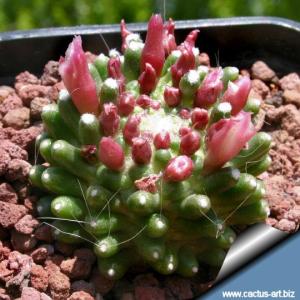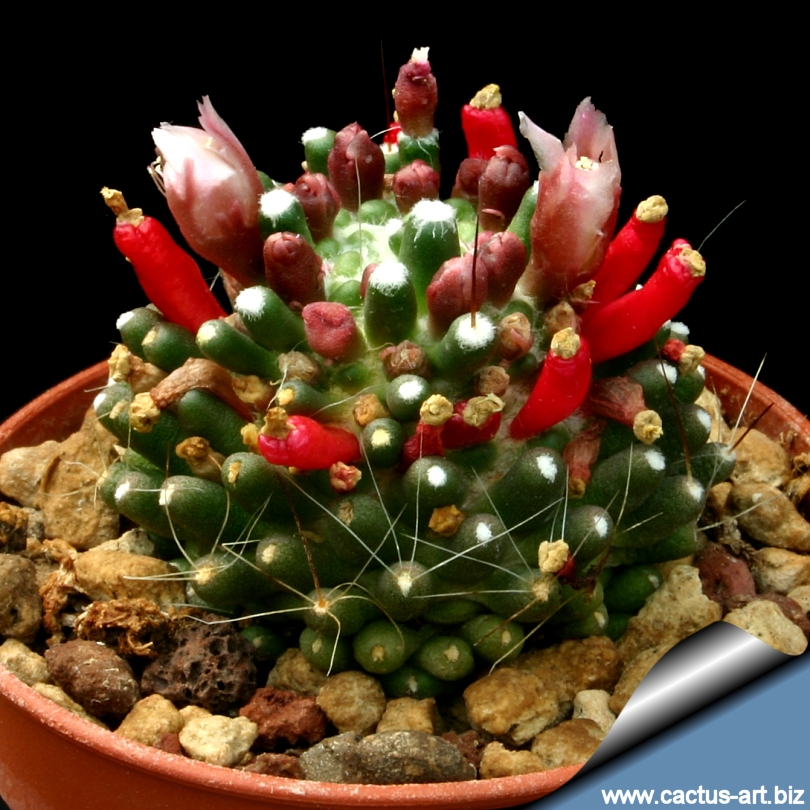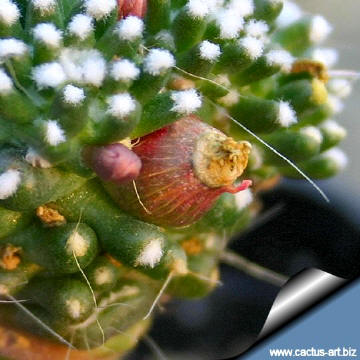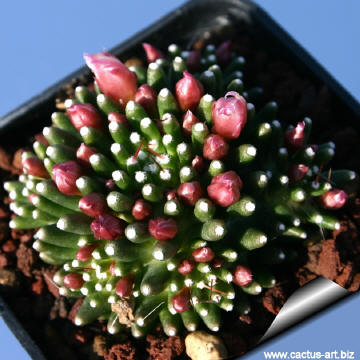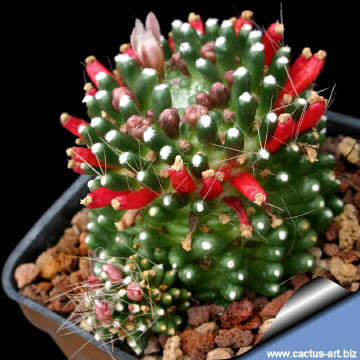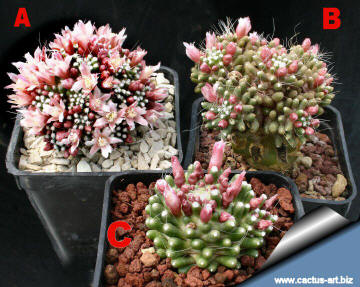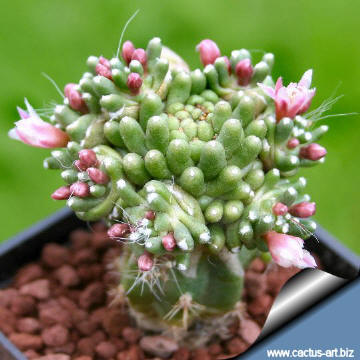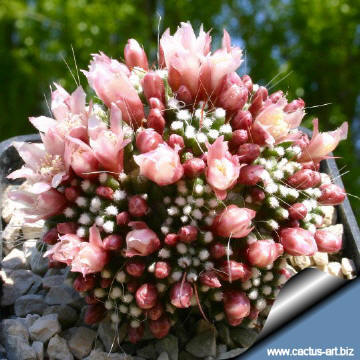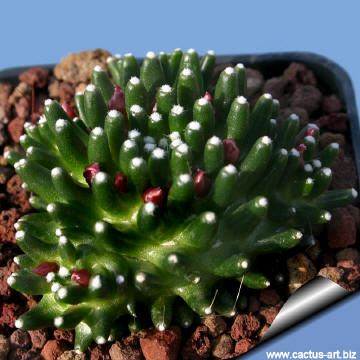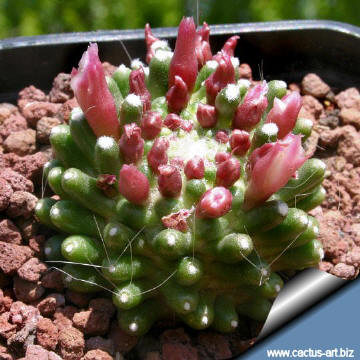-
x
Descrizione
Cultivar molto conosciuta caratterizzata da spine ridotte a sottili setole o assenti, estrema facilità di accestimento e abbondante produzione di piccoli fiori rosa seguiti da frutti rossi. Family: Cactaceae (Cactus Family) Scientific Name: Mammillaria crinita ssp. crinita "mostruosa" Origin: Garden origin (Nursery produced cultivar) Conservation status: Listed in CITES appendix 2. Synonym:
| |
| Description: Usually this M crinita foma mostruosa is offered with the incorrect name of M. painteri (monstrous form). It is a well known cultivar characterized by very reduced or absent spines, free branching, and with small pink flowers. The flowers of plants grafted on O. compressa are not only very abundant but also reach a whole maturation and open to a splendid blossoming. In comparison the flowers of plants on their own roots and on different grafting stocks are smaller, imperfect, and usually fail to open completely. Mammillaria crinita ssp. crinita "mostruosa" looks almost identical to Mammillaria cv. CATERPINCY. We do not exclude that the two different named cultivars might be the same. | |
| | |
| Cultivation: It is a species of easy culture, recommended for any collection, it doesn't require any special treatment. Water regularly in summer, but do not overwater (Rot prone) Use pot with good drainage and a very porous potting media, keep dry in winter. Feed with a high potassium fertilizer in summer. It is quite frost resistant if kept dry, hardy as low as -5° C (some reports give it hardy to -5°C) Sun Exposure: High levels of light are needed to flower and for good spine development. Can be sunburned if moved from shade/greenhouse into full sun too quickly. During the spring it may be able to take full sun until the heat arrives at the end of spring. In an area that has hot afternoon sun, it may be able to take full morning sun, but requires afternoon shade or afternoon light shade. If grown correctly, it will reward the grower with generous displays of small pink flowers followed by red berries. | |

